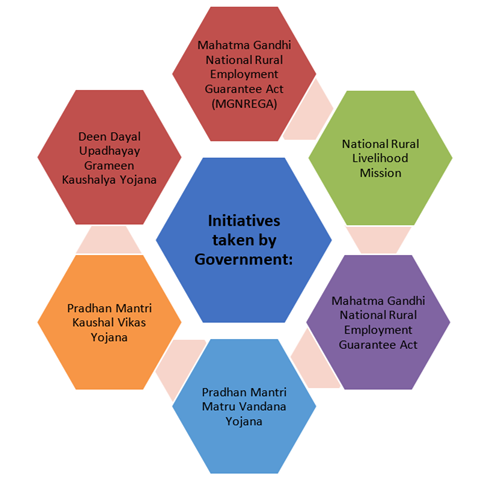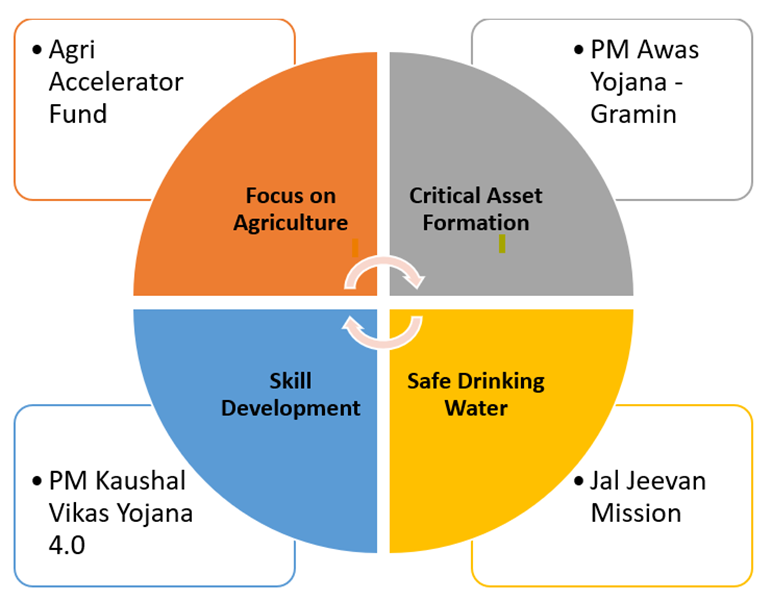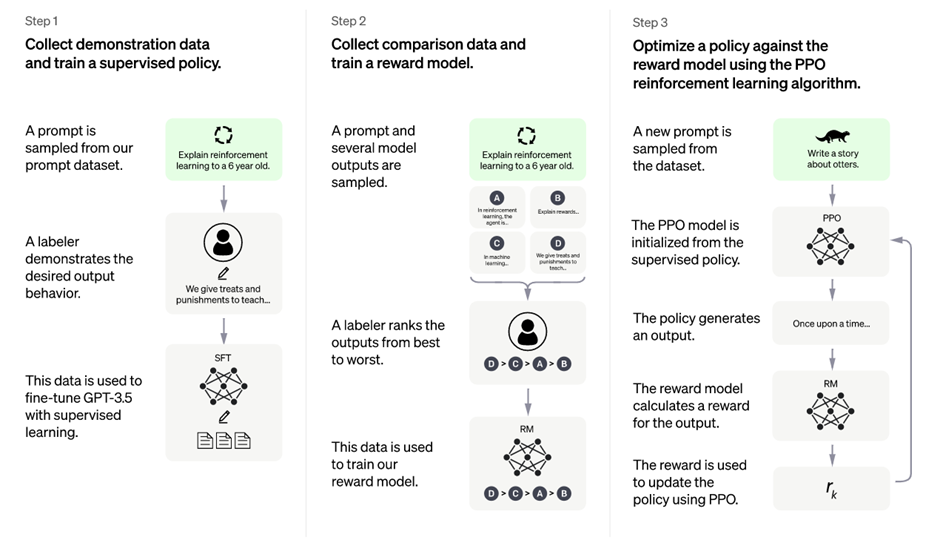Friday, 10th February 2023
Looming threat of Antimicrobial resistance
In News:
A recent report by the United Nations Environment Programme (UNEP) has noted that a dangerous rise of antimicrobial resistance (AMR) could result in up to 10 million deaths annually by 2050.
About the News:
AMR is among the top 10 threats to global health.
- Around 27 million deaths were directly attributed to drug-resistant infections globally and
- 95 million deaths worldwide were associated with bacterial AMR in 2019.
What is AMR?
- Antimicrobials include antibiotics, antivirals, antifungals and antiparasitics, which are medicines that are used to prevent and treat infections in humans, animals and plants.
- AMR occurs when bacteria, viruses, fungi and parasites change over time and no longer respond to antimicrobials.
- Superbugs are strains of bacteria, viruses, parasites and fungi that are resistant to most of the antibiotics and other medications commonly used to treat the infections they cause.
What causes AMR?
These factors create favourable conditions for microorganisms to develop resistance both in humans and the environment from sources such as sewage –
- Increased use and misuse of antimicrobials.
- Microbial stressors such as pollution:
- Pollution in key sectors like pharmaceuticals, agricultural and healthcare can lead to emergence, transmission and spread of superbugs.
- Pollution of air, soil, and waterways undermines the human right to a clean and healthy environment.
- Climate change:
- The scale of its contribution to the rise of AMR is yet to be measured accurately.
Why is AMR a global concern?
- Risk of disease spread: Infections would become harder to treat, increasing the risk of disease spread, illness and death.
- Economic toll: AMR threat could create a Gross Domestic Product drop of at least $3.4 trillion annually by 2030.
- Extreme poverty: AMR could push 24 million more people into extreme poverty.
- AMR could destroy our health and food systems.
How can the spread of AMR be controlled?
Prevention is at the core of the action and the environment is a key part of the solution to stop the spread of AMR.
- ‘One Health’ approach: Implementing comprehensive and coordinated strengthening of environmental action in the ‘One Health’ response to AMR will not only help reduce the risk and burden of AMR on societies but will also help address the triple planetary crisis (climate change, pollution and biodiversity loss).
- Multiple routes to reduce pollutants in pharmaceuticals, agricultural and healthcare sectors include:
- Robust and coherent national level governance
- Planning
- Regulatory and legal frameworks
- Improving integrated water management and sanitation
- Integrating environmental considerations into AMR National Action Plans
- Establishing international standards for what constitutes a good microbiological indicator of AMR from environmental samples and redirect investments
- Establishing new and innovative financial incentives and schemes to reduce AMR
Source: AMR
Marine Protected Areas (MPAs) - Edukemy Current Affairs
In News:
- Experts highlights the need to evaluate Marine Protected Areas (MPA) for effectiveness
About the News:
- Environmentalists emphasizes the need to focus on the quality and effectiveness of MPAs and stress the need to evaluate the effectiveness of protected areas (PAs) and other effective area-based conservation measures (OECMs).
- Previously, the parties at Convention on Biological Diversity (CBD) of COP15 have agreed to monitor and report progress on headline indicators, including the percentage of land and seas effectively conserved.
Major highlights:
- Only 6% of the ocean is under Marine Protected Areas (MPAs) currently while Countries have set a target of protecting 30% of the planet's land and oceans by 2030 at the COP15 to the CBD.
- Nearly 4% of the 6% of the ocean under MPAs is fully and highly protected, while 3.6% is highly protected.
- There is need for new MPAs to be increased dramatically to 30% in the next 7 years.
Marine Protected Areas (MPAs) in India
- India has an extensive coastline of 7517 km length, with 5423 km in peninsular India and 2094 km in the Andaman & Nicobar and Lakshadweep islands.
- MPAs have been established as a tool to manage and conserve marine resources for biodiversity and human well-being.
- There are 24 MPAs in peninsular India and over 100 MPAs in the country's islands, covering a total area of 8214 km.
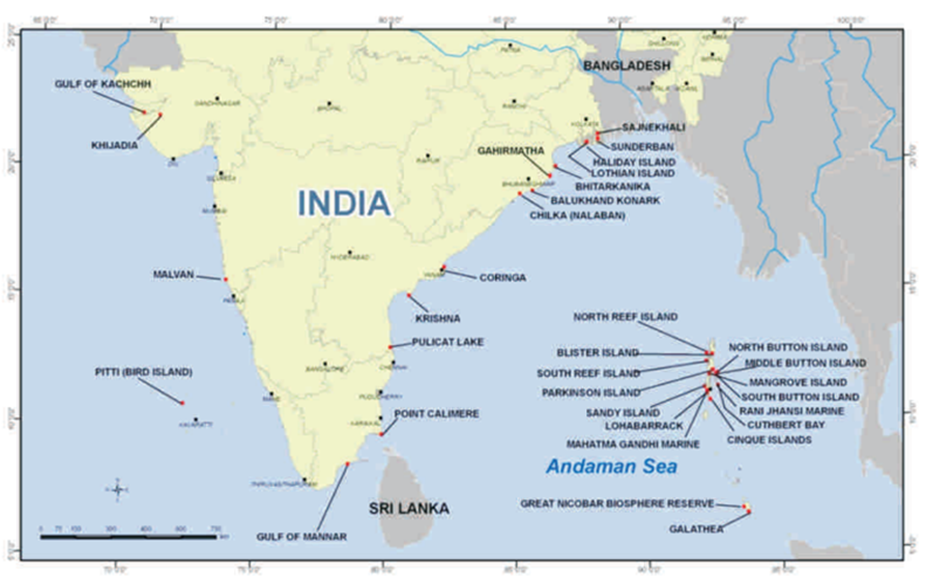
Biodiversity in India
- India represents 2.4% of the world's landmass and supports a population of over 1 billion people.
- India is one of 17 mega-biodiverse countries in the world, with 7.8% of recorded species of the world, including 45,500 species of plants and 91,000 species of animals.
- The marine and coastal ecosystems play a vital role in sustaining India's economic growth.
Importance of Marine Protected Areas (MPAs):
- Protecting Marine Biodiversity: MPAs can help preserve the biodiversity of the ocean by providing a safe haven for threatened and endangered species, and by protecting vital habitats such as coral reefs and seagrass beds.
- Maintaining Ecological Processes: MPAs can help maintain important ecological processes, such as pollination, seed dispersal, and nutrient cycling, that are essential for the health of ocean ecosystems.
- Supporting Fisheries: By protecting critical habitats and reducing overfishing, MPAs can help support sustainable fishing practices, leading to more resilient and productive fisheries.
- Protecting Against Climate Change: MPAs can help protect against the impacts of climate change by preserving areas of the ocean that are especially vulnerable to warming and acidification.
- Supporting Climate Regulation: By preserving ocean habitats and biodiversity, MPAs can help maintain the ocean's ability to regulate the global climate by absorbing carbon dioxide and producing oxygen.
- Providing Economic Benefits: MPAs can provide economic benefits by supporting sustainable fishing practices, attracting tourists, and preserving ocean-based industries.
Threats to Coastal and Marine Ecosystems
- Direct and indirect pressures from population growth, economic development, urbanization, and sewage and waste from agriculture, domestic, and industrial sources are causing degradation of coastal ecosystems.
- Ports and harbours, natural phenomena such as tsunamis, cyclones, hurricanes, and storms are also threatening coastal biodiversity.
- Indirect drivers of ecosystem change include demographic, socio-political, cultural, economic, and technological factors.
- Climate change is rapidly affecting the socioeconomic condition of coastal communities and intensifying pressure on marine bio-resources.
Impacts of Climate Change
- A rise in sea level, increased sea surface temperatures, and ocean acidification are among the impacts of climate change.
- Climate change is affecting the largest mass nesting ground of the Olive Ridley turtle, and causing demographic changes among coastal communities.
- It has become imperative to investigate, quantify, and monitor the impacts of climate change on marine biodiversity in India.
|
Legislation for Coastal and Marine Conservation |
|
Https://Www.Downtoearth.Org.In/News/Environment/-Marine-Protected-Areas-Must-Be-Evaluated-For-Effectiveness--87571
CAR T-cell therapy - Edukemy Current Affairs
In News
CAR T-cell therapies represent a quantum leap in the sophistication of cancer treatment.
About CAR T-cell therapy
- Treatment of cancer:
- surgery,
- radiotherapy, and
- systemic therapy (administering medicines).
- Systemic therapy evolution: From chemotherapy to immunotherapy, and now to CAR T-cell therapy.
- Harvesting T-cells: Chemotherapy or immunotherapy use injectable or oral medication. CAR T-cell therapies use a patient’s own cells to activate T-cells, a component of immune cells.
- Modification of cells: Harvested cells are modified to express specific proteins on their surface, known as chimeric antigen receptors (CAR) that have an affinity for proteins on the surface of tumour cells.
- CAR T-cells are now able to effectively bind to the tumour.
- These modified cells are conditioned to multiply more effectively.
- Infusion: The cells are infused back into the patient’s bloodstream.
- Use: It has been approved for use
- Against leukaemias and lymphomas.
- Among patients with cancers that have returned after an initial successful treatment.
- Improvement over chemotherapy or immunotherapy: These techniques do not directly affect the immune system. When there are abnormalities in the immune system or when the tumour finds a way to evade it, the cancer resists the drugs given in these therapies.
- In CAR T-cell therapy, the cells directly activate the patient’s immune system against cancer, making the treatment more clinically effective. This is why they are referred to as ‘living drugs’.
Source: CAR T-cell
Equalisation Levy - Edukemy Current Affairs
In News
CBDT has introduced fresh norms under the Centralised Processing of Equalisation Levy Statement Scheme, 2023 for filing of statements for equalisation levy by companies.
About
- Equalisation levy (EL) or Google tax vide Finance Act 2016 is a direct tax.
- As per the Act, EL will be charged at 6% on the consideration paid to non-resident towards specified digital space services like online advertisements and digital advertising space.
- Specific services are provided by a non-resident not having a PE in India.
- Payments against such services are provided by an Indian resident carrying on business or by a non-resident having a PE in India.
- The threshold limit attracting equalization is Rs 1 Lakhs.
- Equalisation Levy 2.0 vide Finance Act, 2020 widened the scope of the tax.
- It does not apply to transactions under Finance Act 2016.
- It is levied at 2% on the consideration amount paid to non-residents who own, operate or manage an e-commerce facility or platform.
- The threshold limit attracting EL 2.0 is Rs 2 Crores.
- Centralised Processing of Equalisation Levy Statement Scheme (2023)
- It lays out the procedure for processing Equalisation Levy statements.
- The tax commissioner may declare a statement invalid for non-compliance of the procedure.
- It has also permitted assessees to file revised returns.
- Faceless discussions through written communications or emails have been introduced.
- No assessee or e-commerce operation will be required to appear personally or through authorized representatives for any proceeding.
- This would be a beneficial provision as most assessees are non-residents.
Source: Equalisation Levy
NISAR Mission - Edukemy Current Affairs
In News: ISRO-NASA built NISAR satellite ready to be shipped to India for launch
Major highlights:
- NISAR satellite is a joint Earth-observing mission between NASA and the Indian Space Research Organization (ISRO).
- ISRO and NASA joined hands in 2014 to build the 2,800 kg satellite, with ISRO sending its S-Band SAR payload to NASA in March 2021 for integration.
- The satellite will use a signal-processing technique called interferometric synthetic aperture radar (InSAR) to observe changes in Earth’s land and ice surfaces down to fractions of an inch.
- Data from satellite will measure changes in Earth’s surface topography and create high-resolution images to track the evolution of Earth’s crust, observe the flow rates of glaciers, the dynamics of earthquakes and volcanos, studying climate change, and changes to croplands.
- The NISAR spacecraft will be integrated into the satellite bus at the U. R. Rao Satellite Centre for launch within the next year.
- Over the course of its three-year prime mission, the satellite will observe nearly the entire planet and provide critical information on Earth’s crust, ice sheets, and ecosystems.
Https://Www.Thehindu.Com/News/International/Isro-Nasa-Built-Nisar-Satellite-Ready-To-Be-Shipped-To-India-For-Launch/Article66471507.Ece
Draft Vivad Se Vishwas-II Scheme Notified By Ministry Of Finance
In news
- The Finance Ministry has drafted a new scheme, Vivad se Vishwas II, for one time settlement of contractual disputes.
About
- The scheme will offer a settlement for all disputes with Central government agencies, including autonomous bodies, public sector banks and financial institutions, central public sector firms, union territories and the National Capital Territory of Delhi and their agencies.
- Organisations like metro corporations, where the Centre has a 50% stake, can choose to opt out of the scheme at their discretion after securing board approvals.
- It is proposed to be implemented through an online functionality on the Government e-Marketplace (GeM), portal.
- It will ensure ease of doing business.
- Scheme is proposed to cover only domestic arbitration and not international arbitration.
Https://Www.Livemint.Com/News/India/Finmin-Releases-Draft-Of-Vivad-Se-Vishwas-2-For-Consultations-11675879054472.Html
RBI’s MPC Lifts Loan Costs To Tame Inflation
In news
- The RBI raised the benchmark lending rate by 25 basis points (bps) to 6.5% to target inflation.
About
- The decision of MPC to raise the lending rate was due to the persistently high core or underlying inflation and the RBI, sees it as a risk to the improving outlook for the economy.
- A calibrated monetary policy action is required to keep the inflation expectations anchored, break the persistence of core inflation and thereby strengthen the medium-term growth prospects.
- The MPC, lowered its CPI inflation forecast for the current fiscal year to 5% from the 6.7% it projected at its last policy meeting in December.
|
Monetary Policy Committee
|

Https://Www.Thehindu.Com/Business/Economy/Rbi-Hikes-Repo-Rate-By-25-Basis-Points-To-65/Article66484108.Ece#:~:Text=The%20monetary%20policy%20committee%20(Mpc,Improving%20outlook%20for%20the%20economy.
Climate Inequality 2023: Poor Emit Less, Suffer More
In news
- Climate Inequality Report 2023 , for the first time, has stressed on the differing responsibilities of individuals and not just countries.
About
- Climate Inequality report is published by World Inequality Lab.
- It aims to throw light on various aspects of climate inequality and suggest pathways to tackle climate inequalities.
Key Highlights
- About half the GHG emission is done by top 10% of global carbon emitters.
- Difference between carbon emissions of the rich and poor within a country is now greater than differences in emissions between countries.
- Low agricultural productivity in poorer countries, as well as water scarcity and security are aggravated by climate change.
- Global top emitters’ footprints are greater than carbon budgets required to eradicate poverty.
Suggestions
- It is necessary to develop ways to record collection of climate inequality statistics in all countries.
- There is a need to increase international development aid and accelerate efforts to honor climate finance pledges.
- Low carbon investments can be funded with the help of excess profits on windfall taxes.
- Developing countries also need to reform their domestic tax systems to redistribute more from the wealthy.
- Systematically investigate both intended and unintended consequences of climate and development policy across income and wealth group.
Https://Www.Downtoearth.Org.In/News/World/Poor-Of-A-Country-Emit-Less-Lose-More-New-Paper-Calls-For-Progressive-Taxes-For-Polluting-Elites--87552
Finance Minister balances equity and growth
Exam View: Macroeconomic stability, Capital Expenditure, National Data governance policy.
In News: In a period of economic uncertainty, a recessionary outlook, and continued geo-political turmoil, the Government of India has established its intention to continue on its steady path. Government is focusing on building a self-reliant India, boosting domestic manufacturing capacity, promoting exports, and attracting foreign capital. In this article, the author writes about the budget growth agenda and social redistribution.
Macroeconomic Stability: Budget focus on prudent fiscal management is the most confidence-inspiring aspect. Adherence to the 6.4% fiscal deficit target in FY23 and a 50bps reduction in FY24 sets out a credible target of 4.5% in FY26. This should have a salutary impact on the broader economy as it suggests that money will be available for private entrepreneurs.
- A stable fiscal regime should support currency stability. These factors support a greater formalization of the economy.
Growth driven by capital expenditure: The principal highlight of this year’s budget is consistency in policymaking. For the third time in a row, the government has increased capital expenditure. This continues with a 33% increase in capex outlay to INR 10 trillion, or about 3.3% of the GDP. This will likely enable a robust infra-led economy in the long term.
- The move to extend interest-free loans for another year to the states is a strong signal of consistency and discipline with an eye on long-term benefits rather than short-term SOPs.
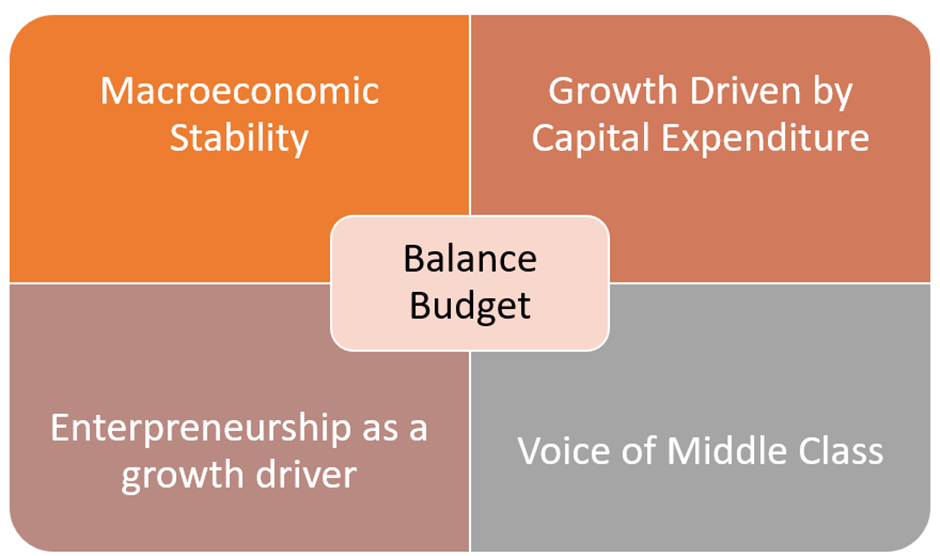
Entrepreneurship as a growth driver: Budget appreciates and recognizes that the startup ecosystem is a crucial high-value job creator in the country. The major announcement on extending the income tax benefit date to start-ups has brought a reprieve to the sector.
- The budget announcement also shows some fresh thinking in initiatives such as the Agri Accelerator fund, public credit infrastructure for credit, and the National Data Governance Policy.
Voice to the middle class: There is finally a recognition that policy needs to attend to the middle class, not just the base of the pyramid. On one end of the spectrum, for the emerging middle classes there is a 66% growth in PMAY provides impetus to the affordable housing sector.
- Changes in taxation will increase domestic consumption which makes for almost two-thirds of India’s GDP should see a long-awaited demand revival.
Action on Sustainability: Climate change and sustainability have become the centerpiece for businesses and governments alike.
- In the year of our G20 leadership, the government’s announcement for a Green Hydrogen Mission, 4,000 MWh battery energy storage is appreciated.
With this budget, India should be on track for its forecast GDP range of 6.9%, and will likely be at the forefront of economic growth and innovation. The 7% delivered economic growth of FY23 only creates more optimism for FY24 because each of these initiatives converges to greater economic stability. In a steady, mature policymaking that eschews abrupt changes, this budget clearly consolidates India’s positive economic momentum.
https://www.livemint.com/opinion/online-views/fm-deftly-balances-social-equity-with-investment-growth-11675514132696.html
Operation Dost - Edukemy Current Affairs
Why in news? India, under ‘Operation Dost’ has sent its sixth plane carrying National Disaster Response Force (NDRF) personnel, essentials, and medical equipment for the earthquake-hit Turkey.
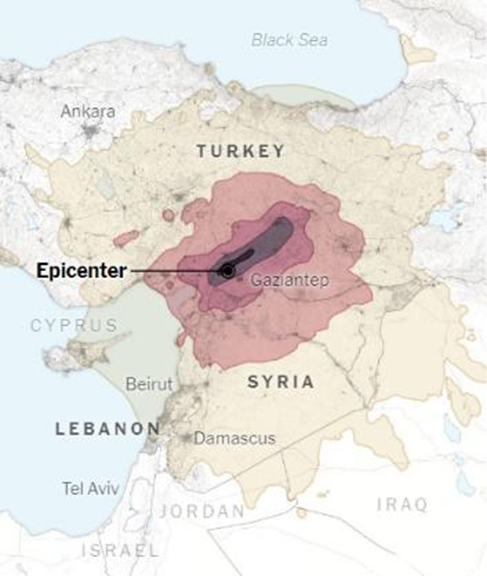
About:
- The earthquake of magnitude 7.7 on the Richter scale hit Turkey and Syria on 6 Feb 2023 followed by a series of aftershocks causing huge devastation, major loss of lives and damage to infrastructure in the two countries.
- Operation Dost symbolises that India is a friend of Turkey and the two must deepen their relations.
- A field hospital under Operation Dost has been set up by the Indian Army in Hatay province of Turkey. India has also sent a transport aircraft with medical supplies to Syria.
- Earlier, the NDRF was sent to two similar international operations – the 2011 Japan triple disaster (earthquake, tsunami and nuclear meltdown) and the 2015 Nepal earthquake.
https://www.aninews.in/news/world/asia/earthquake-sixth-operation-dost-flight-reaches-turkey-with-relief-assistance20230209083837/
Global International biofuel Alliance (GIBA)
Why in news? Recently, GIBA was launched by India during India Energy Week 2023.
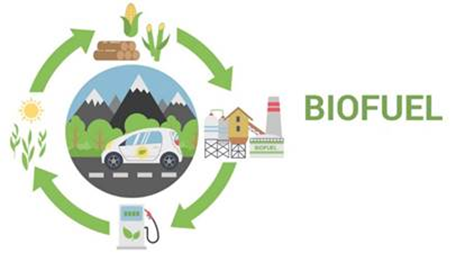
About:
- GIBA will help create a favourable ecosystem for promoting development and deployment of biofuels with key stakeholders including US, Brazil, EU, IEA etc. as a clean mobility alternative under India’s G20 Presidency.
- Biofuel is defined as liquid, solid, or gaseous fuel produced by conversion of biomass such as bioethanol from sugar cane or corn, charcoal or woodchips, and biogas from anaerobic decomposition of waste.
- Biofuels can be used to replace or can be used in addition to diesel, petrol or other fossil fuels for transport, stationary, portable and other applications.
https://pib.gov.in/PressReleasePage.aspx?PRID=1897486#:~:text=India%20launched%20Global%20International%20Biofuel,G20%20Presidency%20have%20advanced%2C%20he
Groundwater Quality - Edukemy Current Affairs
Why in news? Central Ground Water Board found the groundwater in parts of Delhi brackish with a high presence of nitrates and uranium.

About:
- Brackish water is water that is saltier than freshwater, but not as salty as seawater.
- Nitrate (NO3) is a compound found in nature.
- Higher levels of nitrates are harmful to health, especially for babies.
- Its permissible limit is 45 mg/
- Uranium is a naturally occurring radioactive chemical element that occurs in low concentrations in nature.
- Uranium presence in drinking water can cause nephritis (kidney damage).
Heavy metals
- Heavy metals may be defined as elements with an atomic number larger than 20 and an atomic density greater than 5 g cm-3 that must possess metal-like characteristics. Example: arsenic, cadmium, chromium, copper, lead, manganese, mercury, nickel, uranium etc.
https://timesofindia.indiatimes.com/city/chennai/cadmium-level-in-1-chennai-area-15-times-more-than-who-norms/articleshow/97711441.cms
Dickinsonia - Edukemy Current Affairs
Why in news? An alleged fossil discovered near Bhopal about 2 years ago and thought to be of an extinct Dickinsonia turned out to be an impression of a decayed beehive.

About:
- Dickinsonia is considered to be Earth’s oldest animal, dating back 570 million years ago (late Ediacaran period).
- It is an extinct genus of a basal animal (animals which have radial symmetry in their body plans).
- Dickinsonia has been found in Australia, Russia, Ukraine, and China.
- The individual Dickinsonia typically resembles a bilaterally symmetrical ribbed oval.
- Its affinities are presently unknown; its mode of growth is consistent with a stem-group bilaterian affinity, though some have suggested that it belongs to the fungi or even an “extinct kingdom”.
- It is considered an integral links between early, simple organisms and then explosion of life in Cambrian Period that was around 541 million years ago.
https://timesofindia.indiatimes.com/city/bhopal/earliest-animal-fossil-discovered-near-bhopal-turns-out-to-be-beehive/articleshow/97714550.cms
Dr Zakir Hussain - Edukemy Current Affairs
Why in news? Recently, President paid tributes to Dr Zakir Hussain on his 126th birth anniversary.
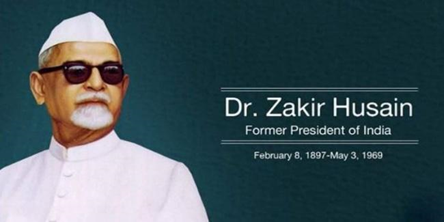
About:
- He served as third President of India and first Muslim to hold the position.
- He helped found the Muslim National University in Aligarh (later moved to New Delhi and today known as Jamia Millia Islamia) and served as its vice-chancellor from 1926 to 1948.
- He became chairman of National Committee on Basic Education, established in 1937 to design a Gandhian syllabus for school.
- From 1956–58 he served on the executive board of UNESCO. He was awarded the Bharat Ratna in 1963.
- He was appointed governor of Bihar state in 1957 and was elected vice president of India in 1962.
https://newsonair.com/2023/02/08/president-droupadi-murmu-pays-floral-tribute-to-dr-zakir-hussain-on-his-birth-anniversary/
Fiji Capital: Suva - Edukemy Current Affairs
Why in news? Recently, Deputy PM of Fiji has expressed hope to partner with India in meeting climate action goals.
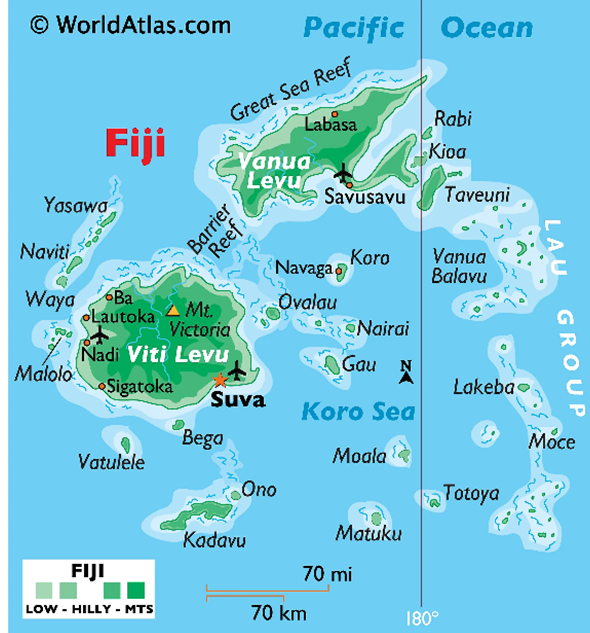
About:
- Fiji is an island country in Melanesia, part of Oceania in the South Pacific Ocean consisting of around 330 islands.
- It is located in Oceania between Hawaii and New Zealand.
- Main Rivers: The Rewa, Navua, Sigatoka (Singatoka), and Ba (Mba).
- Highest Peak: Tomanivi (Mount Victoria) with 4,344 feet (1,324 metres).
- UNESCO’s world heritage site: Levuka Historical Port Town.
- Two major islands - Viti Levu and Vanua Levu - make up 87% of Fiji’s total landmass.
- It surrounds Koro Sea, north of Auckland, New Zealand.
- These islands are largely formed through volcanic action, sedimentary deposit, and formations of coral.
https://www.thehindu.com/news/international/after-15-years-fijis-relations-with-india-on-track-deputy-pm-biman-prasad/article66484027.ece
Share the article
Get Latest Updates on Offers, Event dates, and free Mentorship sessions.

Get in touch with our Expert Academic Counsellors 👋
FAQs
UPSC Daily Current Affairs focuses on learning current events on a daily basis. An aspirant needs to study regular and updated information about current events, news, and relevant topics that are important for UPSC aspirants. It covers national and international affairs, government policies, socio-economic issues, science and technology advancements, and more.
UPSC Daily Current Affairs provides aspirants with a concise and comprehensive overview of the latest happenings and developments across various fields. It helps aspirants stay updated with current affairs and provides them with valuable insights and analysis, which are essential for answering questions in the UPSC examinations. It enhances their knowledge, analytical skills, and ability to connect current affairs with the UPSC syllabus.
UPSC Daily Current Affairs covers a wide range of topics, including politics, economics, science and technology, environment, social issues, governance, international relations, and more. It offers news summaries, in-depth analyses, editorials, opinion pieces, and relevant study materials. It also provides practice questions and quizzes to help aspirants test their understanding of current affairs.
Edukemy's UPSC Daily Current Affairs can be accessed through:
- UPSC Daily Current Affairs can be accessed through Current Affairs tab at the top of the Main Page of Edukemy.
- Edukemy Mobile app: The Daily Current Affairs can also be access through Edukemy Mobile App.
- Social media: Follow Edukemy’s official social media accounts or pages that provide UPSC Daily Current Affairs updates, including Facebook, Twitter, or Telegram channels.

